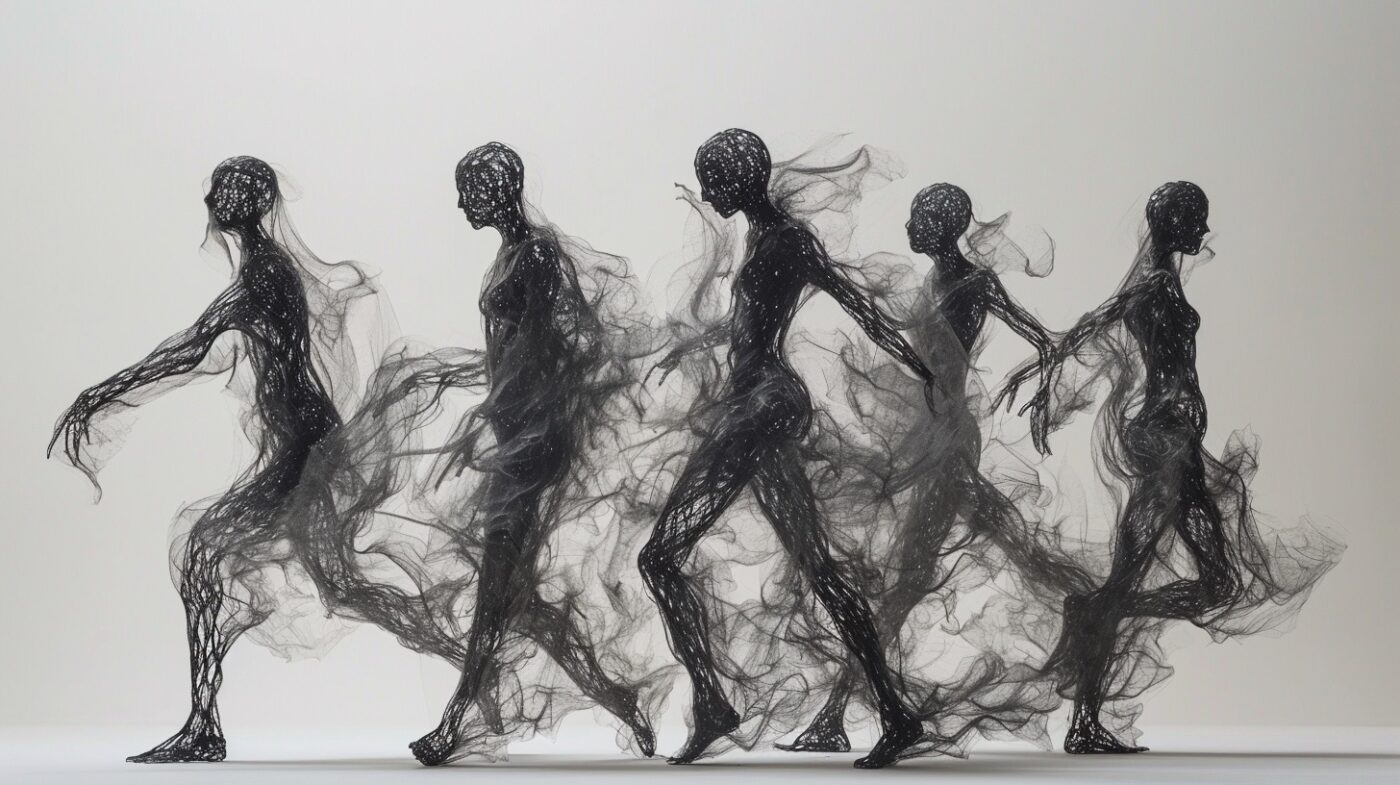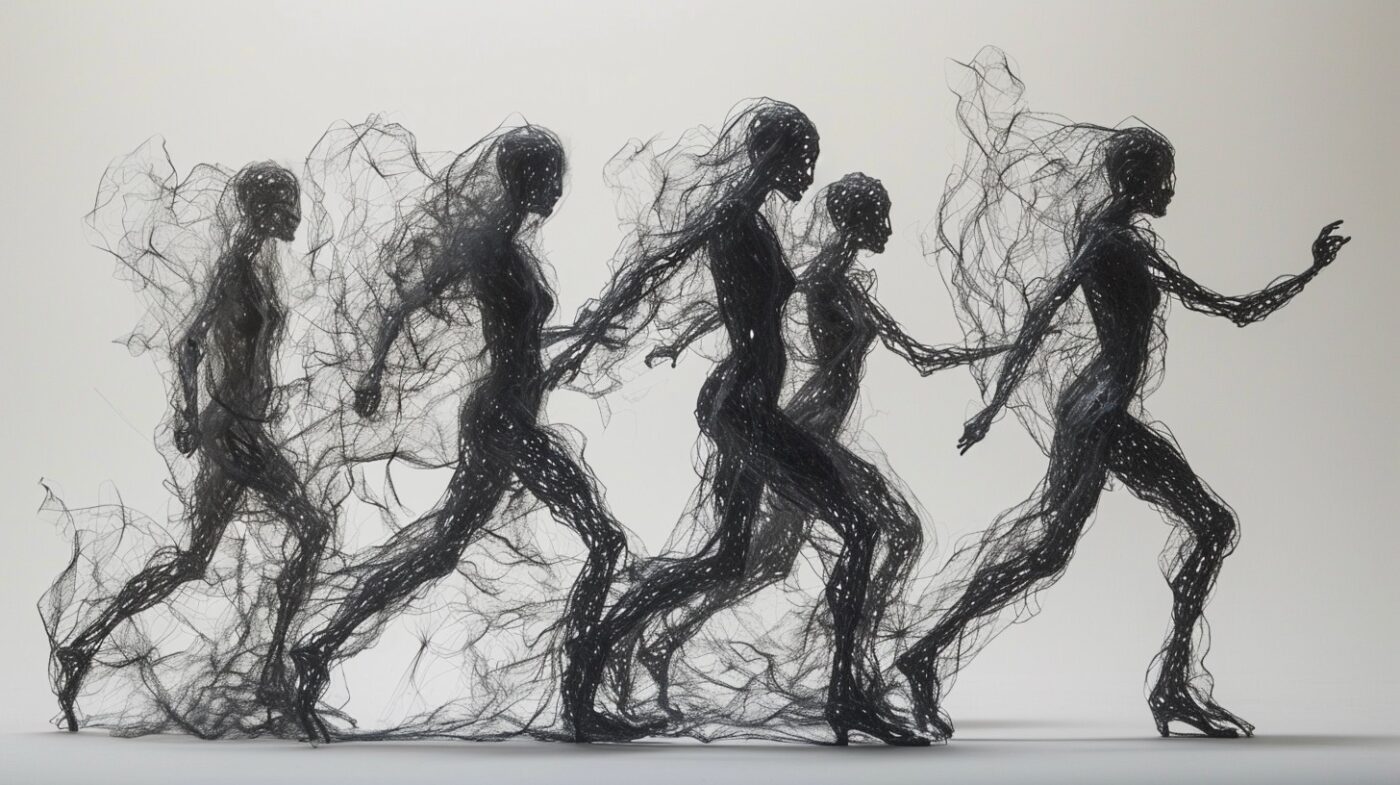What Are the Big Five Traits?
The Big Five personality traits are Openness, Conscientiousness, Extraversion, Agreeableness, and Neuroticism. These traits are widely considered to be the most fundamental dimensions of personality, and they are often used to assess and predict an individual’s behavior.
- Openness is characterized by traits such as imagination, creativity, and a willingness to try new things.
- Conscientiousness can be characterized by traits such as organization, reliability, and a strong sense of responsibility.
- Extraversion is characterized by traits like sociability, talkativeness, and assertiveness.
- Agreeableness is characterized by kindness, empathy, and a desire to get along with others.
- Neuroticism is characterized by traits such as anxiety, moodiness, and emotional instability.
History and Development of the Big Five Model
The Big Five personality traits model, also known as the Five-Factor Model (FFM), is a widely accepted framework in the field of psychology for describing and understanding human personality. The model is based on the premise that individuals possess five broad, underlying personality traits that are relatively stable over time and across situations. These five traits are openness to experience, conscientiousness, extraversion, agreeableness, and neuroticism (commonly referred to by the acronym OCEAN or CANOE).
The development of the Big Five model can be traced back to the work of several researchers in the mid-20th century. In the 1940s and 1950s, psychologists began to develop personality questionnaires that aimed to measure a broad range of personality traits. One such questionnaire was the Minnesota Multiphasic Personality Inventory (MMPI), which was developed by J.C. Hathaway and J.C. McKinley in 1943. The MMPI contained scales that measured traits such as neuroticism, extraversion, and psychoticism.
In the 1960s, a group of researchers led by Paul Costa and Robert McCrae began to develop a new personality questionnaire that would measure a broader range of personality traits. This questionnaire, which became known as the NEO Personality Inventory, was based on the earlier work of Raymond Cattell, who had proposed a model of personality that included 16 underlying traits.
Costa and McCrae’s research led to the development of the Big Five model, which they described in a seminal paper published in 1985. The Big Five model proposed that five broad personality traits can account for most of the variation in human personality. These traits were based on factor analysis of data from a large sample of individuals who had completed the NEO Personality Inventory.
The Big Five model has since become one of psychology’s most widely accepted models of personality, with a large body of research supporting its validity and reliability. The model has been used in a wide range of fields, including clinical psychology, organizational psychology, and social psychology, and has been applied to a variety of research questions, such as predicting job performance, understanding the development of personality disorders, and exploring the links between personality and health.
Openness
Openness is typically defined as the extent to which a person is open to new experiences, ideas, and perspectives. People who are high in openness are generally imaginative, curious, and open-minded, while those who are low in openness are more conventional and resistant to change. Openness is related to several other psychological traits, such as creativity, intelligence, and emotional stability.
Openness trait can be broken down into sub-traits:
- Imagination: The capacity for vivid and original thought, including fantasy and creativity.
- Artistic Interests: Appreciation and interest in the arts, music, and aesthetics.
- Emotionality: Sensitivity to emotions and emotional experiences.
- Adventurousness: A willingness to try new things and take risks.
- Intellect: The capacity for abstract and complex thought and an openness to new ideas and perspectives.
- Imagination: Fantasy, originality, creativity, artistic Interests, appreciation for music, aesthetics, and fine arts.
- Emotionality: Empathy, emotional expressiveness, and sensitivity to others’ emotions.
- Adventurousness: Curiosity, risk-taking, exploratory behavior
- Intellect: Analytical thinking, broad-mindedness, reflectiveness.
Conscientiousness
Conscientiousness is a personality trait characterized by organization, attention to detail, and the ability to plan and follow through on tasks. Highly conscientious people are typically organized, responsible, and reliable, while those who are low in conscientiousness may be more disorganized and impulsive. This trait is thought to be related to an individual’s level of self-discipline and ability to control their impulses and behave responsibly.
- Orderliness: Being organized and paying attention to details.
- Dutifulness: A strong sense of responsibility and obligation to fulfill tasks and duties.
- Achievement striving: A strong drive to set and achieve personal and professional goals.
- Self-discipline: The ability to control impulses and maintain focus towards goals.
- Cautiousness: Being prudent and avoiding risks.
These Sub-traits also break down into sub-sub-traits
Orderliness
- Organization skills
- Attention to detail
- Neatness
- Reliability
Dutifulness
- Responsibility
- Dependability
- Duty fulfillment
- Obligation fulfillment
Achievement striving
- Ambition
- Drive
- Determination
- Goal orientation
Self-discipline
- Self-control
- Impulse control
- Delay of gratification
- Willpower
Cautiousness
- Prudence
- Risk aversion
- Carefulness
- Thriftiness
Industriousness
Industriousness is often considered a sub-trait of Conscientiousness in the Big Five personality model. It refers to the tendency to be hardworking and productive, characterized by persistence, diligence, and a strong work ethic. In some frameworks, it may be considered a subcategory of the achievement-striving sub-trait of Conscientiousness. In others, it may be considered a separate sub-trait within Conscientiousness, reflecting an individual’s drive to engage in productive and meaningful work. Regardless of its exact categorization, Industriousness is closely related to Conscientiousness and is often used as a measure of an individual’s work-related motivation and drive.
Disgust sensitivity
Disgust sensitivity is not typically considered a sub-trait of Conscientiousness in the Big Five personality model. The Big Five model focuses on five broad domains of personality that are believed to capture the most fundamental dimensions of individual personality differences: Openness, Conscientiousness, Extraversion, Agreeableness, and Neuroticism. Disgust sensitivity refers to an individual’s tendency to experience strong feelings of disgust in response to certain stimuli, such as physical or moral impurities, and it is not considered a part of the Conscientiousness domain.
However, it’s possible that in some models or frameworks, disgust sensitivity may be related to or interact with Conscientiousness in some way. Personality is a complex and multi-faceted construct, and different models and frameworks may offer different ways of parsing and categorizing the various traits and sub-traits that make up an individual’s personality.
Extraversion
Extraversion is one of the five major traits of personality, according to the five-factor model of personality. People who are high in extraversion are generally outgoing, talkative, energetic, and sociable. They tend to enjoy being around other people and seek out social situations, whereas people who are low in extraversion may be more introverted and reserved. Extraversion is often considered to be the opposite of introversion, and the two traits are thought to exist on a continuum.
Agreeableness
Agreeableness is a trait that describes a person’s tendency to be cooperative and compassionate toward others. People with agreeableness tend to be more empathetic, generous, and kind. They are more likely to put the needs of others before their own and to be willing to compromise to get along with others. On the other hand, people who are low in agreeableness tend to be more independent and less concerned with the feelings of others. They may be seen as cold, calculating, and unemotional.
- Gregariousness: The tendency to enjoy the company of others and seek out social situations.
- Assertiveness: The tendency to be confident and bold in social situations.
- Activity level: The tendency to have a high energy level and be busy.
- Excitement-seeking: The tendency to enjoy taking risks and pursuing new experiences.
- Positive emotions: The tendency to experience and express positive emotions.
Sociability
- Affiliation
- Cooperation
- Friendliness
Assertiveness
- Self-Confidence
- Dominance
- Self-Assuredness
Excitement-seeking
- Adventure-seeking
- Novelty-seeking
- Thrill-seeking
Positive Emotions
- Enthusiasm
- Joyfulness
- Cheerfulness
Gregariousness
- Talkativeness
- Gregariousness
- Interpersonal attraction
Neuroticism
Neuroticism measures an individual’s tendency to experience negative emotions, such as anxiety, fear, anger, and depression. People who are high in neuroticism tend to be more emotionally reactive and less resilient to stress. In contrast, those who are low in neuroticism tend to be more emotionally stable and less prone to negative emotions. In general, neuroticism is thought to be a relatively stable trait that is influenced by both genetic and environmental factors.
- Anxiety: Feeling nervous, worried, or afraid in response to perceived threats or stressors.
- Angry Hostility: Experiencing feelings of anger and irritation and having an increased likelihood of acting on these feelings.
- Depression: Experiencing feelings of sadness, hopelessness, and worthlessness.
- Self-consciousness: Being self-aware and sensitive to others’ opinions and evaluations.
- Impulsiveness: Acting on urges and desires without fully thinking through the consequences.
Anxiety
- Worry
- Phobia
- Panic
Angry Hostility
- Irritability
- Aggression
- Hostility
Depression
- Low Mood
- Guilt
- Suicidal Thoughts
Self-consciousness
- Self-doubt
- Shame
- Embarrassment
Impulsiveness
- Risk-taking
- Impulsiveness
- Lack of Restraint
How Do Personality Traits Show in the Body?
Personality traits can manifest in a person’s body language and behavior. For example, someone who is shy (low in trait extroversion) may avoid eye contact and have tense body language. In contrast, someone who is outgoing (high in trait extroversion) may make strong eye contact and have more relaxed body language. How a person dresses and presents themselves can also express their personality.
One line of research has examined the relationship between body mass index (BMI) and the Big Five traits. For example, some studies have found that higher levels of neuroticism are associated with higher BMI, while others have found that higher levels of conscientiousness are associated with lower BMI. Additionally, some studies have found that higher levels of extraversion and openness to experience are associated with lower BMI, while others have found no significant relationship.
Other research has focused on the relationship between body shape and the Big Five traits. For example, some studies have found that individuals with an apple-shaped body (i.e., carrying weight in the abdomen) are likelier to score higher on neuroticism and lower on conscientiousness. In contrast, those with a pear-shaped body (i.e., carrying weight in the hips and thighs) are more likely to score higher on agreeableness and conscientiousness.
It is worth noting that the evidence in this area is still limited, and more research is needed to fully understand the relationship between body types and the Big Five model. Additionally, it is essential to recognize that correlations between body types and personality traits do not necessarily imply causality and that other factors (such as genetics, upbringing, and cultural influences) may also shape both body types and personality traits.
Big Five Model Questionnaire
Our Big Five Model test helps our readers identify their strengths and weaknesses by answering a few targeted questions.
The following list contains 75 questions; when answering them, please rank your answer from 0-5.
- 0 = Not at all
- 5 = Strongly agree
After you finish answering the questions, sum up each personality trait, and you’ll get a rank on each one.
Let’s begin:
Openness
- I enjoy pondering complex and abstract concepts.
- I appreciate various forms of artistic expression.
- I love exploring new places and cultures.
- I am fascinated by the underlying principles that make things work.
- I am curious and always eager to learn something new.
- I enjoy trying new foods, music, and experiences.
- I often daydream about possibilities and future achievements.
- I am comfortable questioning my own beliefs and ideas.
- I enjoy discussions that involve different perspectives.
- I am quick to understand new concepts.
- I often seek new experiences or activities.
- I love reading a wide variety of books and articles.
- I am always up for intellectual challenges.
- I often find beauty in things others might not notice.
- I love to get lost in thought.
Conscientiousness
- I always follow through on my commitments.
- I prefer a well-structured schedule to a spontaneous one.
- I pay close attention to details.
- I believe in the importance of setting goals and planning ahead.
- I tend to be organized and tidy.
- I am diligent and hardworking.
- I generally finish tasks immediately rather than procrastinating.
- I am punctual and respect other people’s time.
- I take my responsibilities seriously.
- I strive for perfection in everything I do.
- I keep my promises and uphold my commitments.
- I prefer systematic approaches to spontaneous ones.
- I always plan my tasks and projects in advance.
- I am always prepared and well-organized.
- I keep my living and working spaces clean and orderly.
Extraversion
- I enjoy being the center of attention.
- I thrive in social situations.
- I am comfortable starting conversations with strangers.
- I often feel energized after spending time with people.
- I have a wide circle of friends and acquaintances.
- I enjoy engaging in group activities.
- I am talkative and find it easy to express my thoughts.
- I am outgoing and sociable.
- I prefer going out to staying at home.
- I feel comfortable speaking in front of a large audience.
- I am often described as the life of the party.
- I enjoy meeting and getting to know new people.
- I am usually active and like to stay busy.
- I often take the initiative in work and social situations.
- I am assertive and unafraid to express my opinions in a group.
Agreeableness
- I find it easy to empathize with others.
- I am generally trusting of others.
- I am always willing to lend a hand or help wherever possible.
- I am good at seeing things from other people’s perspectives.
- I enjoy cooperating and collaborating with others.
- I avoid confrontations and arguments.
- I am generally considered warm and friendly.
- I value harmonious relationships.
- I am respectful of others and their viewpoints.
- I often feel a strong sense of compassion for those who are suffering.
- I believe in the importance of forgiveness.
- I am comfortable expressing my feelings and affection.
- I prioritize the needs of others above my own.
- I always try to make others feel at ease.
- I enjoy doing things for others.
Neuroticism
- I often feel anxious or worried.
- I tend to react strongly to negative events.
- I frequently feel stressed or overwhelmed.
- I often dwell on my mistakes and failures.
- I have frequent mood swings.
- I am easily irritated or upset.
- I often feel insecure about my abilities.
- I tend to be sensitive to criticism.
- I often feel uncertain about the future.
- I sometimes struggle to control my impulses.
- I worry a lot about what others think of me.
- I tend to feel unhappy or depressed.
- I often feel nervous or on edge.
- I often fear the worst will happen.
- I have a hard time bouncing back after stressful events.
The Five Elements Pancha Mahabhoota and the Big Five Model
This concept comes from Indian philosophy and Ayurveda, and it describes five basic elements or “Mahabhootas” that are believed to constitute the physical universe, including the human body. These are:
- Prithvi (Earth): Represents solidity and structure.
- Jala (Water): Symbolizes liquidity and the ability to change and adapt.
- Agni (Fire): Represents energy, transformation, and metabolism.
- Vayu (Air): Symbolizes movement and activity.
- Akasha (Ether/Space): Represents the space in which everything exists.
It is difficult to relate these two systems directly since they originate from entirely different cultural and philosophical backgrounds, with the Big Five being a product of modern psychology and the Pancha Mahabhoota rooted in ancient Indian philosophy and medicine. The Big Five is focused on psychological traits and behaviors, while the Pancha Mahabhoota relates more to physical and spiritual elements of existence.
However, if one were to draw parallels, it might look something like this:
- Openness to Experience might be related to Akasha (Ether), as both involve expansiveness, possibilities, and a broad range of experiences.
- Conscientiousness could correlate with Prithvi (Earth), emphasizing stability, reliability, and structure.
- Extraversion might align with Agni (Fire), representing energy and social warmth.
- Agreeableness could be seen in Jala (Water), which is adaptable, nurturing, and vital for life.
- Neuroticism might correlate with Vayu (Air), as both can represent changeability and movement, although this is a more tenuous connection.





